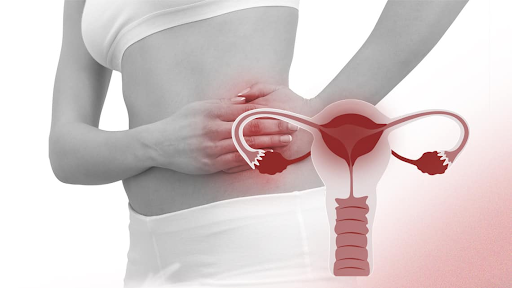Pelvic inflammatory disease (PID) is an infection that occurs in a woman’s reproductive parts. According to the data provided by the New York State Department of Health, around one million women are affected by PID every year in the U.S. In most cases, PID is caused by Sexual Transmitted Diseases (STIs). However, there can also be many other factors that may lead to PID. It is not considered a severe health condition, but it can develop into one if left untreated for an extended period. Generally, PID is treated using a combination of different antibiotics to treat the mild cases. If the case is severe, the doctor may recommend admitting the patient to the hospital and giving the antibiotic treatment through a drip in the arm. Continue reading to know what causes Pelvic Inflammatory Diseases, its symptoms, prevention tips, and most importantly, what antibiotics treat Pelvic Inflammatory Disease.
What Causes Pelvic Inflammatory Disease?
What's in this article...
Usually, the development of the pelvic inflammatory disease is caused by a bacteria. The bacteria enters your vagina and passes to other parts like the cervix, uterus, ovaries, etc., which ultimately leads to PID.
There are many bacteria that may cause PID, but the main ones include gonorrhea, chlamydia, mycoplasma, and genitalium.
Other factors that may cause pelvic inflammatory disease are:
- Having an untreated STI
- Bowel infection
- Appendicitis
- Pelvic Surgery
What Antibiotics Treat Pelvic Inflammatory Disease?
Usually, Antibiotics are considered an optimal treatment for people with mild and moderate symptoms. Here’s the combination of what antibiotics treat pelvic inflammatory disease generally suggested by doctor:

- Cefoxitin, Doxycycline, Metronidazole, and Probenecid
- Doxycycline, Cephalosporin, and Metronidazole
- Probenecid, Cefoxitin, Metronidazole and Doxycycline
So the section cleared the doubts of what antibiotics treat pelvic inflammatory disease. Along with the antibiotic treatments, your doctor may also provide some other instructions to effectively cure the pelvic inflammatory disease, including:
- Avoiding intercourse until you have fully recovered from PID
- Treating your partner if they have tested positive for STIs.
- Having a well-balanced diet
- Staying hydrated
- Taking Enough rest
If the Antibiotics do not show any improvement or if you develop severe symptoms, your doctor may recommend a stay in a hospital to treat PID properly.
What Are The Side Effects of Pelvic Inflammatory Disease Antibiotics?
Antibiotics used to treat PID can cause some side effects, which include the following:
- Skin issues like itching or rashes
- Yeast Infection
- Diarrhea
- Stomach discomfort or nausea
Call your doctor immediately if you notice any side effects or any other discomfort during the antibiotic treatment.
What Are The Symptoms of Pelvic Inflammatory Disease?
Unfortunately, there are not any obvious signs of PID. It may show some mild symptoms, but still, it isn’t easy to spot them.
However, if pelvic inflammatory disease displays any signs, they can be:

- Pain in the lower part of the stomach or pelvis is considered one of the most common signs of PID.
- Discomfort while urinating and having sex
- Bleeding after intercourse
- Vginal Discharge that has a bad odor
- Vomiting and nausea
- Loss of appetite
- Mild or high fever
- Period cramps lasting longer and causing.
Please note that in some cases, there might not be any signs of PID. Therefore, it is important to regularly get tested for STIs, especially if you are sexually active, to spot the PID or any other disease before it worsens.
Are There Any Ways To Prevent Pelvic Inflammatory Disease?
Here are some ways that you can opt for to prevent the Pelvic Inflammatory Disease.

- Get Tested For STIs – You and your partner should get tested for STIs before having sex. Once tested, share the results with your significant other. This is a sure way to reduce the risk of PID. You can also choose to be in a mutual monogamous relationship, in which you only have sex with one partner who has tested negative for STIs.
- Use Condoms – Condoms are one of the best ways to prevent PID while having sex. Hence, always ensure your sexual partner wears a condom before the sex begins. However, keep in mind that condoms will not eliminate the total risk of STIs as they are not 100% effective, according to a source.
- Reduce Your Sexual Partners – Limit the number of partners you have sex with. Experts state that having multiple partners increases the risk of developing PID.
- Do Not Ignore Any Symptoms – If you notice any sign of PID, seek professional medical help as soon as possible.
- Avoid Douching – Douching may cause the bacteria in your vagina to enter the other parts of the vagina, increasing the risk of PID. Douching may also remove the protective bacteria from your vagina that prevents infections.
Frequently Asked Questions
1. Can You Get PID Without Being Sexually Active?
Yes, it is also possible to get PID without engaging in sexual activity. The existing bacteria can also cause Pelvic inflammatory disease. Women who don’t clean up properly after using the bathroom are also at a high risk of getting PID.
2. At What Age Does PID Start?
Women under the age of 25 are more likely to develop PID. However, remember that PID can also occur in any woman, regardless of age, if they are sexually active.
3. Where Does PID Pain Start?
Generally, the PID pain starts from the area of the lower tummy or around the pelvis.
4. How Long Does PID Last?
If PID is diagnosed at an early stage, it can be treated within two weeks using antibiotics. However, if left untreated for a longer period, it may lead to severe health issues like infertility.
Conclusion
Pelvic Inflammatory Disease can be treated easily using the combination of a few antibiotics. As you are looking fro what antibiotics treat pelvic inflammatory disease, it is important to note that treatment usually takes around two weeks to fully show its effects.
The diagnosis of PID at the right time is important, otherwise, the condition may take severe form and cause other serious health issues to an individual. Thus, if you notice any signs of the PID, inform your doctor promptly.
Even if you don’t notice any symptoms, it’s still important to get tested for STIs frequently so that any disease like PID can be detected at early stages and the treatment begins at the right time.
Ansh Sharma is a content writer who possesses the skill of describing different topics in a simple and creative manner. He has a vast interest in crypto and finances, but is also well-versed with many other niches like pets, health, technology, gaming, etc. Apart from writing, he loves to read non-fiction books to continually learn and grow.





